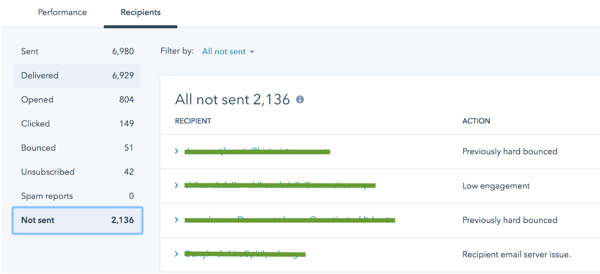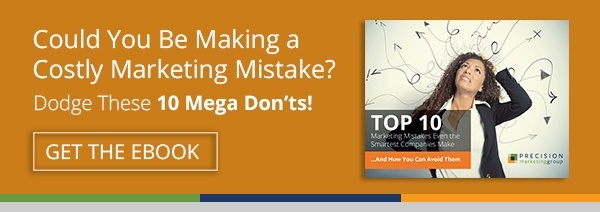Have you been tasked with improving your company's email engagement rate? Simply getting your emails delivered into your contacts’ inboxes is becoming harder every year, let alone inspiring contacts to actively engage with them. But don’t give up!
Improving your engagement rate can improve your email sending score, which means you’re more likely to make it into the front-and-center inbox. And higher engagement starts with getting your audience to open your email—and that's what this post sets out to help you do.
“Email engagements such as clicks, opens, and spam complaints contribute to your email sending reputation. Higher rates of positive engagements improve your chances of reaching the inbox instead of getting stuck in a spam filter.” Source: HubSpot
In this article, we highlight several creative email marketing tests to try this quarter—with the goal of increasing your email open rates.
What is a good email open rate for my industry?
We get this question a lot. This is a really great article that examines bulk email sends by industry to give you a solid baseline. Across all industries, the average email open rate is 37%.
However, every business—and every contact database—is unique. You should identify your average open rate and strive to improve it over time as opposed to benchmarking yourself against other companies.
And remember that different email types may have different standard open rates. One-to-one emails from your sales team probably have a much higher open rate than your automated blog notifications. And you may find that your newsletter sends have a much different open rate than your lead nurturing emails.
Improve email deliverability with a contact database cleanup!
Regular contact database cleanups often take a backseat as we try to get our marketing campaigns out the door. But ensuring your database is up-to-date and engaged is the first step toward improving your email open rate.
Examining your failed deliveries for an individual email send can help you understand what percentage of your database is ineligible to receive email. Contacts are ineligible to receive email if they are highly disengaged, have unsubscribed, have previously hard bounced, or have soft bounced several times.
Navigating to the recipients tab in the HubSpot Email tool and clicking on “Not Sent” from the menu can give you a high-level view of your deliverability:

Cleaning up your database by removing contacts that can no longer receive your email will instantly improve your deliverability rate.
When sending one-off emails from HubSpot, you may also want to select the option to not send to disengaged contacts. This will ensure that contacts that haven’t historically engaged with your email do not continue to receive what is known as graymail. Over time, it may be best to completely remove disengaged contacts from your database.

Did You Know? Every HubSpot portal comes equipped with the standard ‘Unengaged Contacts’ list. Search for it in your Lists tool. From there, you can change the criteria of this list to meet your specific needs. This allows you to customize what “unengaged” means for your specific business.
Moreover, you can also build a list in HubSpot of contacts that have opened and/or clicked more than 10 of your emails. Then, send these highly engaged contacts thoughtful, awesome, targeted content. Try ungating a new white paper or webinar and give it to them without the requirement to fill out a landing page form. If you’re in the B2C space, send these recipients a special offer or coupon. The more these folks engage with your emails, the higher your sender score is.
Once your database is cleaned up, you’re ready to start running tests to improve your open rate! Read on for nine creative techniques that will help you make this happen.
1. Customize the Sender Name.
Instead of sending your email from a generic department or company name, try sending the email as if it is coming from a real person. Better yet, if your HubSpot portal is synced with your CRM, try sending emails from your contact’s sales representative. Seeing a familiar name in the inbox can help to increase open rates.
Simply search for “owner” in the From Name drop down menu:

HubSpot Pro Tip: Make sure you’ve selected a default contact for those who don’t have an owner assigned yet. And make sure your sales team is aware you’re sending emails on their behalf, so they aren’t surprised when someone reaches out asking for more information.
2. Be thoughtful about the Sender Email Address.
You also have the option to deliver your message from a sales representative's email address. If your email is coming from something like a noreply@, info@, or sales@, try using a more approachable Sender Name. Inventing a new inbox and routing responses there may help. Don’t be afraid to have fun with it! Here are two examples:
Emails from Crowd Cow, an innovative company that allows people to crowd-source the purchase of sustainably-sourced meat, come from moo@crowdcow.com.
Le Tote, a fashion rental company, sends emails from hi@letote.com.
HubSpot Pro Tip: Keep in mind that replies to your email will go to whichever email address you select here, including automated responses like out-of-office notifications. So you may not want to use the personal email of your company’s president...
3. Use personalization in the subject line.
Personalization is key to getting your emails opened. When people feel like an email has been customized for them, they're more likely to view the message within. Use tokens like first name, company name, industry, birthday, persona, and more to improve traction.
Did You Know? According to Campaign Monitor, emails with personalized subject lines are 26% more likely to be opened.
Here are some examples with suggested token defaults (in the event the contact's first name is unknown and you only have their email address):
- This content has written all over it -- Default: your name
- Hand-picked for you this week, -- Default: my friend
- How are things at ? -- Default: your company
- Is it time for a change at ? -- Default: your company
- The latest marketing trends for -- Default: your industry
HubSpot Pro Tip: Remember that your default should fit in seamlessly when the information for the property token you select doesn’t exist for that contact in HubSpot. It helps to read it out loud. And sending a test email to yourself can help ensure you’re sending the right message. Leverage HubSpot's testing functionality and try sending the message to yourself as a few different contacts to see if everything looks okay!
4. Make your contact feel extra special.
Using a first name is the best way to call out an individual, but there are other ways to craft an effective subject line that feels like it’s been written specifically for them. Here are some examples:
- you’re invited! -- Default: Hey there,
- We picked these resources out just for you
- This product/service is perfect for you,
- Here’s your monthly newsletter,
- You asked, and here it is!
5. Reference information you’ve collected about your contact.
Here's another great feature about HubSpot! For contacts that accept cookies and convert on your site, you have access to their page views, recent downloads, and collected form data. Referencing information or activities they’ve taken may sound a bit creepy, but this makes your email feel targeted and customized. Here are some examples:
- Because you liked -- Default: similar content
- Do you have questions about [page they visited]? -- our pricing?
HubSpot Pro Tip: If you know certain pages are big contributors to visit-to-lead conversions or closing customers (such as pricing, product FAQ, about us, or the contact page), why not trigger an automated email when they visit the page once or twice? Ask them if they have questions or send an ungated resource. Getting in front of your potential buyers while they’re visiting key pages can dramatically increase engagement AND lead to new customers!
6. Try using an emoji in your subject line.
Sure, you could argue that emojis are too informal for some industries and audiences. However, if your database tends to view emails on their smart phone, you could see a dramatic increase in open rate by placing an emoji in your subject line. Here are some examples:
- {Medal emoji} Everyone’s a winner with our product/service!
- The newest product is here! {celebrate emoji}
- did you hear the news? {sunglasses emoji} -- Default: Hey
7. Foster a sense of urgency.
Creating a sense of urgency can be done through the language, dates, and references you make in your subject line. And yes, there are ways to do this without being too gimmicky. That said, if you’re dealing with a stagnant, disengaged audience, turning up the gimmicks can sometimes be motivation enough to get people re-engaged. Here are some examples you can customize:
- Oops, you almost missed this !
- All great sales come to an end…
- It’s finally here! Check out (product/service) now:
- It’s your last chance
- Only hours left
- One day only
- Don’t be late
8. Avoid trigger words.
Using overtly spammy language is a surefire way to get filtered out of the inbox, especially for advanced clients like Gmail. HubSpot put together an ultimate list of spammy words to avoid, so be sure to check those out. But here are a few we sometimes see...
- Guaranteed
- Free
- $
- Give Away
- Save Money
- Discount
Now, just because a word appears on this list, it doesn’t mean you should avoid it at all costs. If your email is thoughtful and helpful to the recipient, the intent may come across. Writing for your audience’s needs almost always gets rewarded over writing for robots.
9. Experiment with timing.
Our days get busy. If your email comes into the inbox right before a big presentation, or during peak productivity, it might get deleted or archived right away. If you typically send emails during business hours, try sending at a different time. Most people check their phones after working hours. Here are a few timing options to experiment with:
- During prime commuting hours: those who use public transit will likely settle in and out of their inboxes to prepare or unwind from the day. Try sending at 7:00 am and/or at 5:30 pm.
- After dinner: Sending email around 7:00-8:00 pm will target those who like to check email before hitting the hay.
- Over the weekend: Try sending on Saturday morning or later on Sunday to target those that are more likely to engage with promotions or offers while not in the office.
There are also email send time optimization tools like Seventh Sense that help you send emails to recipients based on data that shows when they're most likely to open the email. While no tool is going to be perfect right off the bat, over time it should really make a difference!
HubSpot Pro Tip: You can now send emails based on a contact’s timezone. If your database is scattered across the country—or even the globe—customizing by timezone can dramatically improve engagement rates. Simply select this option in the “Send or Schedule” tab in the Email tool.

Get started on testing today!
Marketing tactics and best practices are changing all the time. Sometimes we think we know the best time, the best messaging, or the best approach to our database. But if the results simply aren’t there, experimenting with different approaches is the best way to see how your audience responds.
So what are you waiting for? Spice up your subject lines this week and see what happens!




